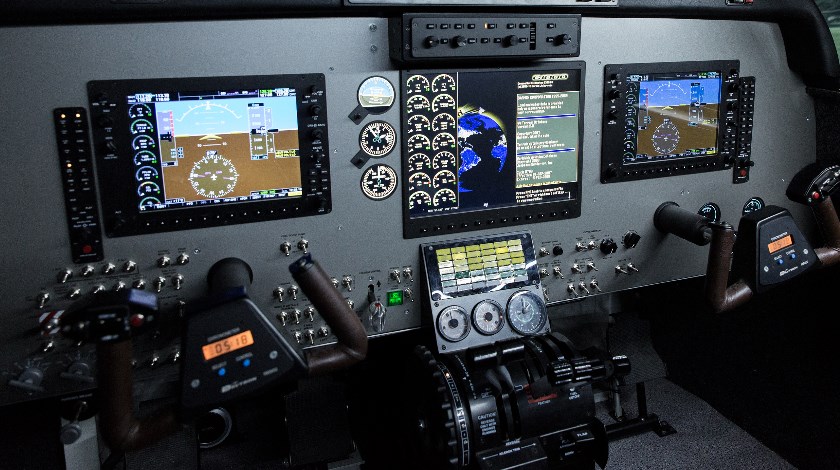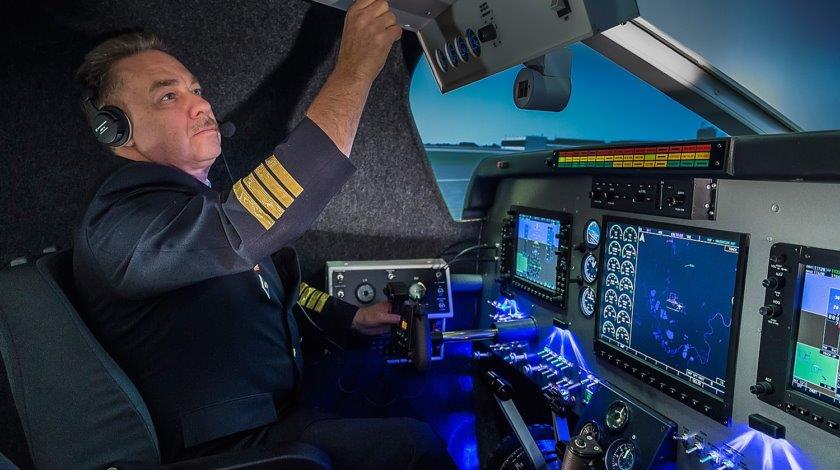Photo: SimHelp
Reading Time: 3 minutesDespite the advancing technology and improved aircraft reliability, crew decision making also known as a human factor remains the most important factor in aviation safety.
For that reason, the quality of pilot training remains the critical factor in accident prevention. Professional training, first of all, requires qualified instructors and proper training devices. For instrument rating, one of the initial stages of pilot training, flight navigation procedure trainers (FNPT) are of vital importance.
How can instructors benefit from FNPT?
Robertas Svabauskas, Deputy Head of Training for Aviation Training Ab Initio at BAA Training, one of the biggest European standard aviation training centres, says that cost efficiency is just one of the benefits.
“Besides reducing costs and limiting the environmental impact, trainee pilots can be trained in real procedures such as navigation, instrument flight and how to handle failures as well as various emergency procedures which cannot be easily accomplished on a real aircraft”, – comments R. Svabauskas.
From the instructor’s point of view, FNPT training is far more superior to training on the actual aircraft. It, first of all, allows experiencing any malfunctions and bad weather conditions.
“Students need to spend the majority of the training time practicing the difficult part of flying and not wasting it flying straight and levelling as in a real aircraft IFR session“, says R. Svabauskas.
It is also indispensable in situations when a trainee makes a mistake. In FNPT training session you are able to stop and start at a specific point. Training on a real aircraft would make this very complicated or even impossible.
How can flight schools gain advantage from FNPT?
The first and one of the most important advantages of FNPT is its efficiency. Schools are able to use the devices 24/7 irrespective of season or weather conditions. For instance, if the weather is suitable for flying, you can have approximately 8 flight hours on an aircraft a day, whilst on an FNPT it can amount to 18 hours meaning almost 3 times more training sessions. More intense and shorter courses are beneficial both for a flight school and a student.
Secondly, training on FNPT is 100 percent safe. It is hard to imagine how a trainee or an instructor can get hurt or cause damage to the device. There is only a slight chance of technical risk which is not that difficult to deal with keeping in mind that the majority of manufacturers offer remote 24/7 support.
Last but not least, training on the FNPT means lower costs. An hourly rate of training on a real aircraft can hardly be compared to the one on FNPT if you count the additional costs like airport security and airport parking fees, approach charges and maintenance expenses. By training on an FNPT you can get the same result, but far cheaper.

Buying FNPT: aspects to consider
How can flight schools prepare in order to have their students well equipped to meet the challenges facing airline pilots today? Edgaras Petrikas, SimHelp Sales Manager, recommends searching for a reliable solution. He guides those in the early stages of investigation to client using FNPTs reviews. User reviews are front and centre there.
“They can give you a lot of valuable insights about the quality of the products. Usually training session loads are huge and will have a tendency to increase in the future. So you need to look for a long-lasting, resistant and easy to maintain device,” – says E. Petrikas.
The device needs to be as authentic as possible. FNPT needs to be a full size replica of a specific aircraft type’s instruments, equipment, panels and controls in an open flight cockpit area or an enclosed aircraft flight cockpit. The price of the device is also crucial; however, one needs to evaluate what is behind it.
“If a lower price means lower quality, it cannot be the right option. It is important to understand that the training quality is directly related to safe and sound flights and it all starts at aviation academies. So, the quality of a training device must be a priority”, emphasises E. Petrikas.
The manufacturer has to also provide the previous EASA or FAA certificates of the installed devices to prove that the certification procedure will be smooth and easy.
Reliability, training efficiency and cost effectiveness that the FNPT can offer for training centres are the key factors to consider when facing a dilemma whether to obtain another FNPT simulator or not. Experienced and professional pilots play a crucial role in aviation safety. This fact should remind flight schools to invest in everything that might support safety – starting with training and simulation facilities.

